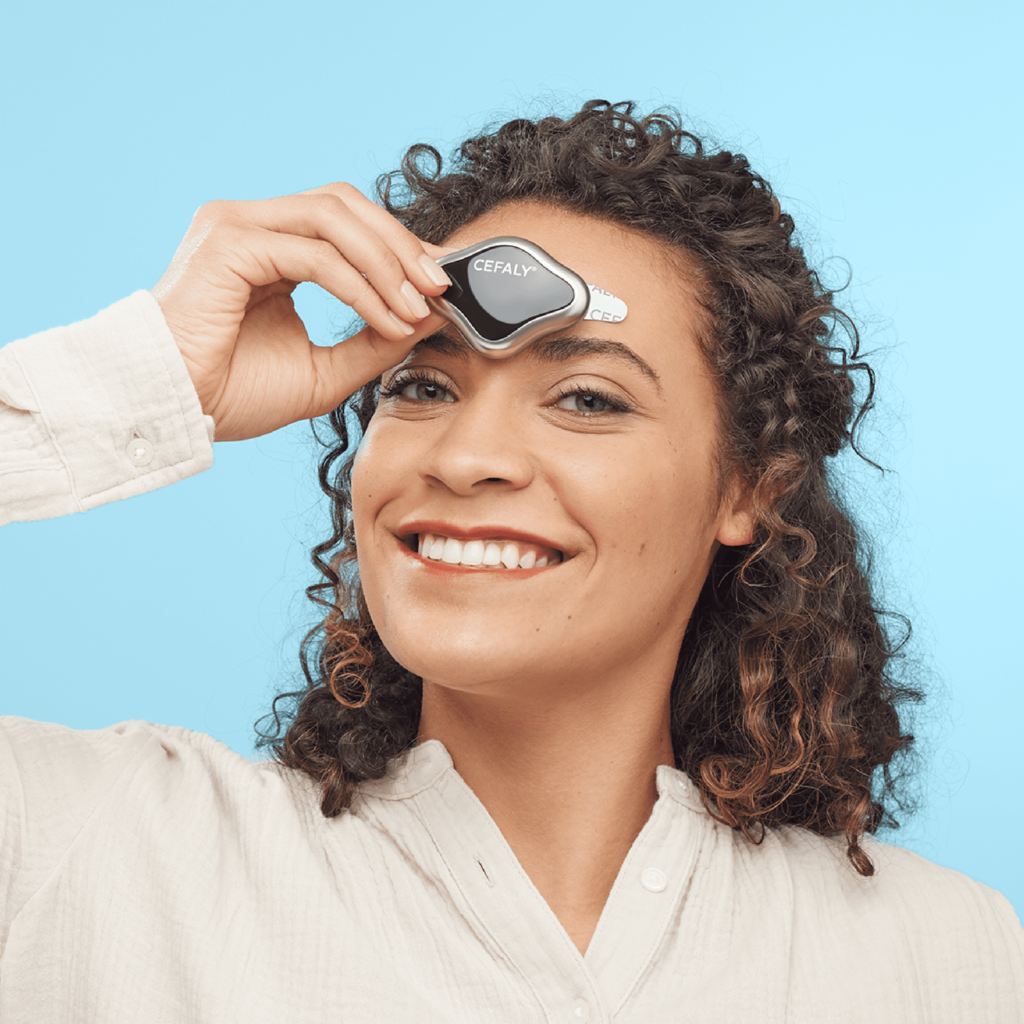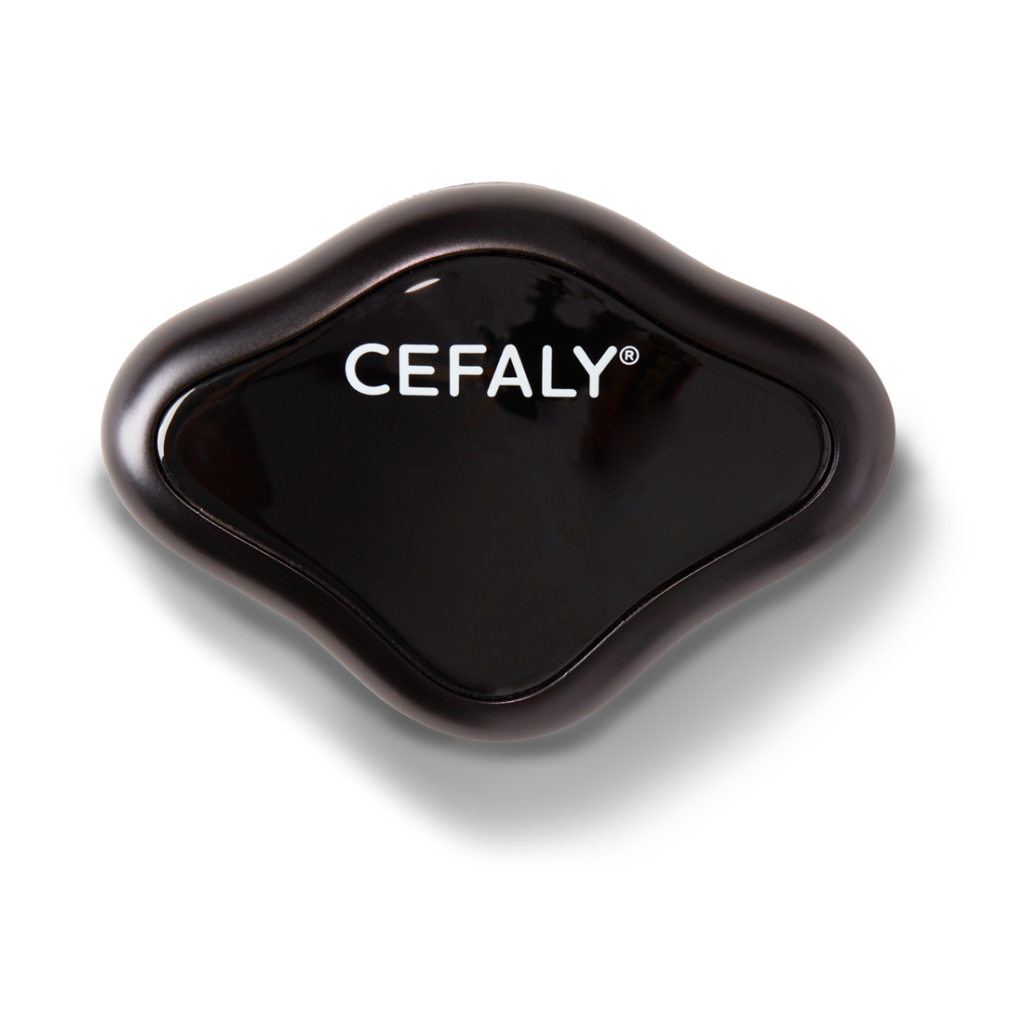Did you Recently Receive a Cefaly Device?

Source: Cefaly
Instructional Videos
Getting Started

Controlling Intensity

Connected App

Benefits
- Treats acute migraine attacks quickly
- Prevents future episodes
- Safe and Effective
- Share data with your doctor - Connected App
Recommendations
- Treatment time is more important than intensity
- 20 minute daily Preventative Treatments
- Consult your physician for personal treatment

FAQ
Brain aneurysm, Tumor, Epilepsy, or Stroke
If you have a history of any of these conditions, it is best to discuss them with your healthcare
provider prior to starting CEFALY treatments.
Yes. Implanted cardiac devices (i.e., pacemakers, loop monitors, defibrillators) are listed as
contraindications to CEFALY use according to the US Food and Drug Administration.
CEFALY has not been studied in patients with implantable cardiac devices, therefore the
contraindication is precautionary. The risk of inference of the CEFALY device with implanted
cardiac devices is unknown. Though the risk is unknown, the potential for serious consequences
of electrical dysfunction of an implantable cardiac device is a primary factor leading to the
contraindication labeling.
If there are specific concerns regarding this contraindication, we recommend you discuss with
your cardiologist and / or neurologist to determine the most appropriate and individualized
treatment option and alternatives.
Though clinical studies have demonstrated efficacy / results with CEFALY using the maximum
stimulation intensity, you may experience migraine relief using CEFALY at lower stimulation
intensities. When starting CEFALY treatments, the target intensity will vary from person to
person. In general, the stimulation should be comfortable / tolerable without adverse effects
for the entire duration of the treatment. The big-picture is to reach long and short-term
migraine relief with a tolerable level of stimulation. Over time, your nerves may become
accustomed to the stimulation intensity, and you may consider gradually allowing higher
treatment intensities. It is common for headaches to become slightly worse during the initial
minutes of CEFALY treatment; however, the treatments should not be painful before
stabilization. Please refer to our instructional video “Controlling the Intensity.”
In clinical studies, once the full simulation is tolerated, relief from migraine attacks using the
CEFALY ACUTE treatments are generally expected within the first five treatment sessions.
CEFALY ACUTE often provides migraine relief as soon as the first treatment session. In a clinical
trial, 29% of migraine sufferers reported complete migraine relief after 1-hour initial use of
CEFALY ACUTE treatment. In the same study, 63% of migraine sufferers experienced a 50% or
more reduction in their migraine severity pain at 1 hour after initial use of CEFALY ACUTE
treatment. In addition, the effect of reduced average migraine severity was sustained over a 24-
hour period.
For CEFALY PREVENT treatments, some users begin to see benefits within 6-8 weeks; however,
most users see results by three months.
CEFALY PREVENT 20-minute daily treatments can be used anytime during the day or evening. A
common side effect of CEFALY treatments includes sleepiness after use. Many migraine
sufferers may experience difficulty falling asleep and therefore prefer CEFALY PREVENT
treatments prior to bedtime in order to transition to sleep. Though we encourage you to rest
during therapy, CEFALY treatments should be avoided while sleeping.
Each CEFALY ACUTE treatment lasts for 60-minutes. CEFALY ACUTE treatments are best utilized
early in the migraine attack or during migraine aura(s). The CEFALY ACUTE treatment can be
used consecutively for up to two (2) sessions (i.e., 2 hours). The effectiveness and safety of
CEFALY ACUTE treatments, greater than 2 hours per day, has not been established in clinical
studies.
Daily CEFALY PREVENT treatments (20-minute duration) can be used the same day as CEFALY
ACUTE treatments.
CEFALY is NOT contraindicated in pregnancy. However, the safety of CEFALY treatments in
pregnancy has not been established in clinical studies. You should consult your healthcare
provider prior to CEFALY treatments if you are planning to become pregnant or are pregnant.
There are no contraindications of CEFALY treatments with other medications. Some CEFALY
users may experience sleepiness with treatments. Therefore, caution is advised for patients
starting CEFALY who are also taking sedative medications.
Please use this link to the comprehensive medical FAQ that includes but is not limited to common health issues, use around metals
